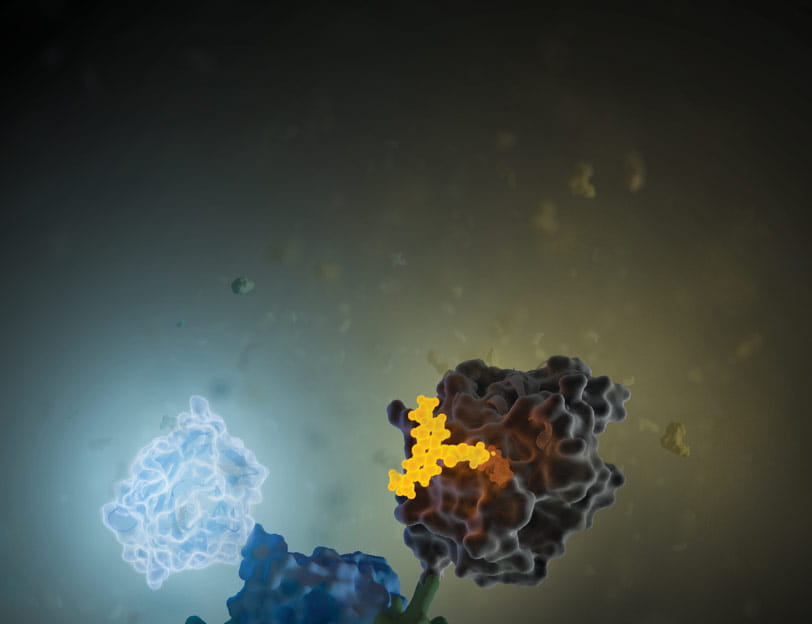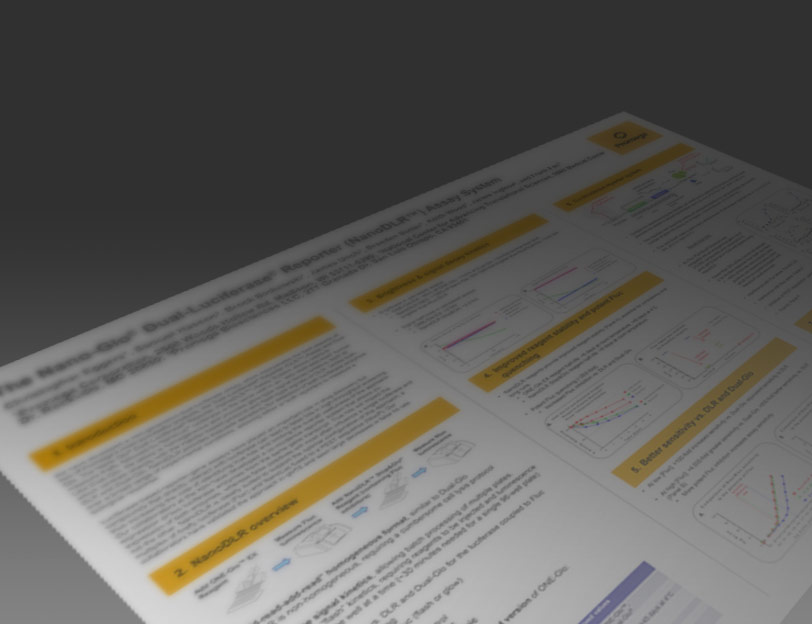Traditional methods for studying interactions between proteins, like co-immunoprecipitation, do not provide data in the context of the cellular environment.
Using Bioluminescence Resonance Energy Transfer (BRET), it is possible to quantitatively measure the interaction between proteins in live cells. In some cases, it is even possible to measure these interactions in real time, observing not only the formation of the interaction but also the dissociation of the partners.
BRET measures protein interactions using a bioluminescent donor fused to a protein of interest and a fluorescent receptor fused to its binding partner. The bioluminescent donor, usually a luciferase, does not excite the fluorophore using light, but transfers resonance energy through dipole-dipole coupling. To transfer resonance energy, the donor must be within 10nm of the receptor and in the proper orientation, making the technique useful for measuring proteins in close proximity. The spectral overlap between the bioluminescent donor and fluorescent acceptor is an important factor for achieving optimal energy transfer while minimizing background signal, and proper instrumentation is required to separate the donor and acceptor signals.
Protein interactions can also be detected in live cells using complementation-based assays, where an active reporter enzyme is generated when subunit components are brought into proximity by two interacting protein partners. Complementation-based assays typically provide a direct measure of reporter activity with simpler instrumentation requirements.
For protein interaction studies in live cells, it is important to ensure that the technology used does not significantly interfere with normal protein function, and to ensure that the enzyme subunits do not self-associate in the absence of the interacting protein partners. The small size and bright signal of Nanoluc® luciferase accommodates detection at low, native expression levels with minimal interference with natural protein function. The low self-affinity of the NanoBiT® subunits combined with live-cell detection offers kinetic, real-time analysis of protein interaction dynamics in living cells.



